
1.2 Ten are the numbers, as are the Sephiroth, and twenty-two the letters; these are the Foundation of all things. Of these letters, three are mothers, seven are double, and twelve are simple. (This translation of the Sefer Yetzirah is from Rabbi Aryeh Kaplan’s excellent text which can be found here: https://books.google.co.id/books/about/Sefer_Yetzirah.html?id=aqc-61vr4q0C&redir_esc=y )
Alt. Trans. Ten are the numbers, as are the Sephiroth, and twenty-two the letters, these are the Foundation of all things. Of these letters, three are mothers, seven are double, and twelve are simple.
Wescott Trans: 1.2. Ten are the ineffable Sephiroth. (9) Twenty−two are the Letters, the Foundation of all things; there are Three Mothers, Seven Double and Twelve (10) Simple letters.
Wescott Notes:
9. The Ineffable Sephiroth. The words are SPIRUT BLIMH, Sephiruth Belimah. The simplest translation is “the voices from nothing.” The Ten Sephiruth of the Kabalah are the “Ten Primary Emanations from the Divine Source,” which are the primal forces leading to all manifestation upon every plane in succession. Buxtorf gives for Sephiruth−−predicationes logicae. The word seems to me clearly allied to the Latin spiritus−−spirit, soul, wind; and is used by Quintilian as a sound, or noise. The meaning of Belimah is more doubtful. Rittangelius always gives “praeter illud ineffabile.” Pistorius gives “praeter ineffabile.” Postellus evades the difficulty and simply puts the word Belimah into his Latin translation. In Frey’s Hebrew Dictionary BLIMH is translated as nothing, without any other suggestion; BLI is “not,” MR is “anything.” In Kabalistic writings the Sephiruth, the Divine Voices and Powers, are called “ineffbilis,” not to be spoken of, from their sacred nature.
10. The classification of the Hebrew letters into a Triad, Heptad and Dodecad, runs through the whole philosophy of the Kabalah. Many ancient authors added intentional blinds, such as forming the Triad of A.M.T., Ameth, truth; and of AMN, Amen.
Commentary:
The Sephirot are not actual numbers but are the source of the numbers: that is, they are the source of the logos or, more properly, the logos itself. Sephirah means “counting” (or “counting on”). We “count” and “count on” the physical universe to ensure us that our knowledge of it is true knowledge. We begin to count with the fingers of our hands. We ‘count on’ those things that are ready-to-hand, things that we can touch and manipulate. Numbers are one of the ways in which we view, interpret and encounter things. Just as we view and de-fine things through words, we can also do so through numbers.
Number is not possible without the space and time of the physical universe for number must express itself in quantity and there is no quantity in one. Wisdom (Chakmah) and Understanding (Binah) lead to Knowledge, and Knowledge and Understanding lead to Wisdom. Wisdom is said to have 7 pillars which are the 7 subject or knowledge areas of study, “the seven pillars of wisdom”. Knowledge is the product of Understanding and Understanding is prior to knowledge. The link between Wisdom and Understanding is the Word, or the letters, and the link between Understanding and knowledge is also the Word which imposes limits on things and makes them particulars. We understand, for instance, the plant-like of the plant and the animal-like of the animal before we have knowledge of the particular plants or particular animals and through speech can name them and can point them out to others.
Space is prior to Time and the Sephirot are sometimes referred to as “the 10 Sephirot of No-thingness (space)”, the Ain. I write “no-thing” to distinguish it from the nihil which is our common understanding of the nothing. It is with Time that things come into being; and according to the Sefer Yetzirah, things come into being through the three books of text, number and speech which are mediaries between Wisdom and Understanding. Knowledge and Understanding must also be linked through the Word. Through the “naming” of things, things are given their place (topos in Greek) in space and so can be talked about. The world and its experiences and contexts that have been created is to be interpreted as “text”. We read the world or worlds in which we live.
The lines in the Tree of Life total 22: 3 horizontal, 7 vertical and 12 diagonals corresponding to the 22 letters of the Hebrew alphabet. The 3 horizontals are called Mothers, the 7 verticals are called Fathers, and the 12 diagonals are called Simples. It is through the letters that the universe was created and they are called the 22 Foundation letters. It is through the letters that we come to understand and know the world.
The letters are not only involved in the inception of the world but they also sustain it. It is through text, number, and speech that the world is sustained and, as such, it is through human beings that “the way, the truth and the life” is sustained in the world since human beings are the only beings capable of speech. If one knows how to manipulate the letters correctly, one then knows how to manipulate the elemental forces and things of creation through the principle of reason. This relates to what the Greeks understood as techne, a knowing that involves a making (and what our word “technology” means today, and what is understood as yetzirah or “formation” in the text). This knowing and making is what artists and scientists do. This is but one side of the knowing that is present in the Sefer Yetzirah.
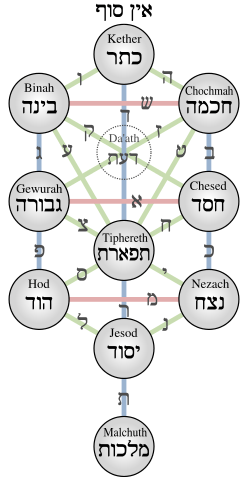
The three primary letters of the Kabbalah are א Alef (Ox), מ Mem (water) and ש Shin (tooth); and these are called the Three Mothers. They are the horizontal lines highlighted in red in the illustration on the left. Alef is the first letter of the Hebrew alphabet, Mem is the middle letter, and Shin is the second to last. The last letter (Tav) is not used because it is one of the Doubles (and thus would seem to imply a choice). The Doubles are illustrated in blue.
The three Mother letters are called “crossroads” because they are horizontal lines and cross over to the other side of the Tree of Life from left to right when viewed from the ascending motion or from the bottom up. They move from right to left when viewed in the descending motion, from top to bottom. (Notice that the Sephirot of Chesed and Gevurah are linked by the letter Alef which has passed through Tiferet initially. Chesed is Loving Kindness or Mercy, while Gevurah is Severity or Force. Chesed is what we understand by manifest Nature while Gevurah is what we understand by Convention. Tiferet is Beauty, and the letter Alef is in the centre of its name. It is the fire that is symbolized as the Sun. More will be said about this later.)
The twelve Simples or Elementals are illustrated in green and they are the diagonal channels of movement within the Tree of Life which are the netivot or private paths that one must traverse before one is able to ascend the Tree of Life.
The Sefer Yetzirah: 1:3
1.3 The ten numbers formed from no-thing are the Decad: these are seen in the fingers of the hands, five on one, five on the other, and over them (precisely in the middle) is the Covenant by voice spiritual (the Circumcision of the tongue), and the rite of Circumcision corporeal (as of Abraham).
Alt. Trans. The ten numbers formed from no-thing are the Decad: these are seen in the fingers of the hands, five on one, five on the other, and over them is the Covenant by voice spiritual, and the rite of Circumcision, corporeal (as of Abraham).
Wescott Trans: 1.3. The ineffable Sephiroth are Ten, as are the Numbers; and as there are in man five fingers over against five, so over them is established a covenant of strength, by word of mouth, and by the circumcision of the flesh. (11)
Wescott’s Notes;
11. The Two Covenants, by the Word or Spirit, and by the Flesh, made by Jehovah with Abraham, Genesis xvii. The Covenant of Circumcision was to be an outward and visible sign of the Divine promise made to Abraham and his offspring. The Hebrew word for circumcision is Mulah, MULH: note that MLH is also synonymous with DBR, dabar,−−verbum or word.
Commentary 1:3
While one has the plan for formation, for making something, through the understanding (the covenant of the spiritual or invisible word or voice), the formation itself occurs through the work of the hands. The covenant of the spiritual or voice is what we call “intelligence” or “consciousness”. The making of things occurs through the use of the ready-to-hand of the material things about us. Understanding is comprised of dianoic thought (the thought the brings or gathers separate things together into a unity or a one i.e. the logos) and diaretic thought (the thought that separates things to distinguish them from other things, how we classify things through our taxonomies). The manner of the seeing or how this covenant is interpreted or heard will determine whether one views the creation first through Love (Tiferet/Chesed) or whether one views the creation through Will (Gevurah/Tiferet), and this distinction is essential. These are the two faces of Eros and of the Logos.

The influence of the Pythagoreans on the Sefer Yetzirah can be seen in Aristotle’s, Metaphysics, I.5.986 a22, where he says: “Members of this school [the Pythagoreans] say there are ten principles, which they arrange into two columns of cognates (the pillars of Jakim and Boaz in the Tree of Life), thus: limited and unlimited, odd and even, one and many, right and left, male and female, rest and movement, straight and curved, light and darkness, good and bad, square and oblong.” The ten principles of the Pythagoreans correspond to the 10 Sephirot of the Kabbalah’s Tree of Life.
One of the puzzling things about the Tree of Life is the basic sense of direction given to it: do we determine the right and left from our perspective or should the Tree of Life be viewed in a mirror or from its own perspective which would reverse the directions given to it? I am puzzled because I am wondering how we can attribute Love (Chesed) as a Masculine principle (Aphrodite/Venus is female and the surroundings of The Emperor #4 card in Tarot are sterile i.e., they have no living nature about them) and the Masculine is placed on the right-hand side of the Tree which contains the five Loves, while Strength/Force/Will are attributed to the Feminine aspects and placed on the left side of the Tree of Life and are called the five Strengths? I will attempt to make sense of this puzzle as I proceed with this commentary.)
A covenant comes between two separate, unequal parts and holds them or yokes them together in a harmony; it makes them commensurate to each other. The covenant of the Spiritual Circumcision is the Parousia of God, the “being alongside”, “between”, “among”, that is the relation of God to His creation. The covenant is “the Lamb slain from the foundation of the Earth” for Christians, and the Ten Commandments of God or the Torah for the Hebrews. For the Hebrews, truth is revealed as Law; for Christians, truth is revealed as Being. The middle pillar of the Tree of Life is the place of the covenant. (This could be represented pictorially in the form of a cross as two diameters of a circle or sphere crossing in the centre).

In the Hebrew, the “circumcision of the tongue” is fluency in speech i.e., the highest speech, “prophecy”, the ability to pre-dict. We consider science as our “highest speech” because of its ability to predict outcomes and so we, currently, “bow down to” science. This fluency of speech is a gift through the mediation or parousia of God in His creation. Without this presence, we would know nothing. The two Cherubim on the Ark of the Covenant were said to be the source of all prophecy, but God is the third who speaks through the Cherubim who are the mediators: “There I will meet with you, and from above the mercy seat (Jakim, the ark cover), from between the two cherubim which are upon the ark of the testimony I will speak with you”. (Exodus 25:22) The two Cherubim on the Ark represent the two faces of Logos and Eros. When the Cherubim were removed from the Ark with the destruction of the First Temple, prophecy is said to have ceased to exist.
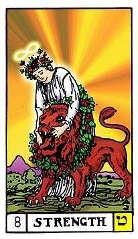
The circumcision of the sexual organ is the recognition that one can be empowered to have control over the urges that create strife in the human body and soul, one of the most dominant being the sexual urge. (This could be seen as an example for justifying the Strength card as #8 in Tarot since this is the step beyond the Chariot card and the strife between the two sphinxes represented in that card. The figure’s easily closing the jaws of the lion representing the passions would suggest this. The Justice card, however, suggests the need for control on the social plane, the higher demand to be just to each human being. It is the urges, the needs, that we have which create injustice in human relations. But they also create Justice…The Tree of Life seems to suggest that the individual is on the right side and the social is on the left side and there is the constant crossing over via the paths.)
The two covenants spoken about here would suggest the two faces of Eros and the Logos, the voice and the flesh, the spirit and the body, which shall be discussed in more detail as we proceed further into the texts of the Sefer Yetzirah and “The Thirty-two Paths of Wisdom”.
The Sefer yetzirah 1:4
1.4 Ten are the numbers of the ineffable Sephiroth, ten and not nine, ten and not eleven. Learn this wisdom, and be wise in the understanding of it, investigate these numbers, and draw knowledge from them, fix the design in its purity (“make each thing come to stand in its essence”), and pass from it to its Creator seated on his throne.
Alt. Trans. Ten are the numbers of the ineffable Sephiroth, ten and not nine, ten and not eleven. Learn this wisdom, and be wise in the understanding of it, investigate these numbers, and draw knowledge from them, fix the design in its purity, and pass from it to its Creator seated on his throne.
Wescott Trans: 1.4. Ten is the number of the ineffable Sephiroth, ten and not nine, ten and not eleven. Understand this wisdom, and be wise by the perception. Search out concerning it, restore the Word to its creator, and replace Him who formed it upon his throne. (12)
Wescott’s Notes:
12. Rittangelius gives “replace the formative power upon his throne.” Postellus gives “restore the device to its place.”
Commentary 1:4
Was God’s creation an act of will or an act of love? God in His withdrawal, His allowing something to be other than Himself, provides us with the perfect path or example for our own existence. (As the French philosopher, Simone Weil, once said: “If we forgive God for not existing, He will forgive us for existing”.) Is the withdrawal of the great artist from his work an act of will or an act of love? The artist can choose to withdraw or not; the artist can choose to bring forth that which inspires her or not. The common view is that it is an act of will rather than an act of love which brings forth great art; but an artist who withdraws through the will does not produce ‘great art’.
Both God and the Sephirot are “ineffable” and cannot be described through the use of language. But to see God as pure Will moves too close to Nietzsche for my liking (the eternal recurrence of the Same). The Sephirot are emanations of God and are, therefore, used to describe God. But God is beyond the Sephirot (Plato: “The Good is beyond Being”), just as the rose itself is beyond the emanation of its odour. The Sephirot themselves are inadequate representations of the Good. We could equate them with the “ideas” of Plato.
The Sephirot are one of the ways used to attempt to describe God, ways that human beings can comprehend the qualities of God or the predicates of God. All cultures attempt to describe God with the things that are ready-to-hand for them. God is One and ineffable. The attempts to proselytize the “true religion” without first learning the nature of the religion of those that one is attempting to convince that it is the “true religion” is akin to madness, an error and misunderstanding of the directive to “Go forth and make disciples of all nations”. A “disciple” is a “friend”, one with whom one can engage in friendly conversation i.e., dialectic. The proselytizing spirit should have been an exercise in communication and unification but, unfortunately, it was not. It became, and remains in most cases, an exercise in power, an exercise in evil.
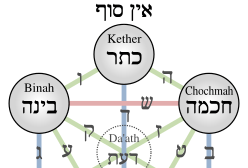
This passage of the Sefir Yetzirah deals with the first three Sephirot: Keter, Chakmah, and Binah: The Crown, Wisdom, and Understanding. As discussed earlier, Wisdom is knowledge of the whole, which is difficult if not impossible to attain since we ourselves are part of the whole; however, this does not deter the quest for such knowledge, and as long as there are human beings, such a quest will continue.
Understanding precedes knowledge in that understanding is the sensory awareness of the presence-at-hand of things as well as their possible readiness-to-hand for ends that we determine. To make things stand in their essence is to reveal them in their truth. From this revealing of things in their truth, one passes from them to their Creator. One examines all things and determines which Sephirot relates to them (“Examine with them”). “Probe from them”: the Sephirot are not contemplated in themselves but are used to develop an insight into the things of the world. (Plato’s ideas are numbers, but they are not the numbers of arithmos or calculation. One uses them to gain knowledge of the things of the world and to recognize the things as “shadows”.) This “probing” brings a thing to a stand so that it will step forth and show itself as a “this” and not “that”. To let a thing be in its essence is to go beyond viewing the thing as something which is of possible use for our ends.
Here is thought understood as dianoia and diaresis, with knowledge as the outcome. The Sephirot themselves are reached through the “paths of Wisdom”; the paths are the “pure design” which is the product of Understanding (the limits placed on the Unlimited). The “design” is the Law of Necessity. The “examining” of things with the Sephirot is the determination of how the things in their essence belong to, or are possessed by, the Sephirot to which they belong or are possessed. The “probing” of things is the determining of the essence of the thing, the determining of the truth of the thing and the revealing of the thing for what the thing really is. This revealing “elevates” the thing from the shadows into its true reality. Examining and probing are part of questioning. This elevating of the thing is the “restoring” of the original Word to its Creator. We participate in the creation of the world by decreating ourselves by mirroring God’s act of withdrawal.
The four universes of the Sefer Yetzirah are: 1. Atzilut (Nearness, Emanation, the parousia of the Divine); Content: Sephirot; Level: No-thingness; 2. Beriyah (Creation); Content: the Throne (the Creation itself as the “lowering” of God, and the vehicle through which He expresses His care and concern through the Beauty of the world); Level: Something from No-thing, ex nihilo; the Sephirot of ‘no-thingness’; 3. Yetzirah (Formation); Content: Angels/Cherubim, products of the spirit, mediators; Level: Something from Something, “in another for another”; 4. Asiyah (Making, Action); Content: Shadows of the physical; Level: Completion (the work, the artifact, from dynamis potential to energeia the completed work). More will be said about the four universes later.
The Sefer Yetzirah 1:5
1.5 These Ten Numbers, (beyond which is the Infinite one), have the boundless realms, boundless origin and end, an abyss of good and one of evil, boundless height and depth, East and West, North and South, and the one only God and king, faithful forever seated on his throne, shall rule over all, forever and ever.
Alt. Trans. These Ten Numbers, beyond the Infinite one, have the boundless realms, boundless origin and end, an abyss of good and one of evil, boundless height and depth, East and West, North and South, and the one only God and king, faithful forever seated on his throne, shall rule over all, forever and ever.
Wescott Trans: 1.5. The Ten ineffable Sephiroth have ten vast regions bound unto them; boundless in origin and having no ending; an abyss (13) of good and of ill; measureless height and depth; boundless to the East and the West; boundless to the North and South; (14) and the Lord the only God, (15) the Faithful King rules all these from his holy seat, (16) for ever and ever.
Wescott Notes:
13. Abyss; the word is OUMQ for OMQ, a depth, vastness, or valley.
14. My (Case’s) Hermetic rituals explained this Yetziratic attribution.
15. The Lord the only God. The words are ADUN IChID AL, or “Adonai (as commonly written) the only El.”
16. Seat. The word is MOUN, dwelling, habitation, or throne.
Commentary 1:5
The text here deals with Space. God, the infinite One, is the “Former” (Yotzer), “the one who forms”. He is the Demiourgos of Plato’s Timaeus. The distinction between “formation” and “creation” is important. Here, the formation occurs within that which is boundless. The boundless is the “unlimited”, designated as the water of Chakmah, the khora of Plato’s Timaeus, that which is given limits so that it may be de-fined (“of the limits”) and designated as a particular thing. It is given shape. The boundless is given its limits through language and number, and it is through language and number that things come to stand as ousia, as presence in their particularity in the Now of Time. God as the Former is the Logos of the Greeks (“It is through Him that all that is comes into being, and nothing comes into being except through Him”. John 1: 1-5)
The three lower universes align with the ideas of “to create” (Beriyah), “to form” (Yetzirah), and “to make” (Asiyah). “Wisdom” is to create, “Understanding” is to form, and “knowledge” is to make. The making implies the completion of an action, the pro-duction of a thing such that the thing requires no further action and is complete; it is “perfect” in its emergence into presence.
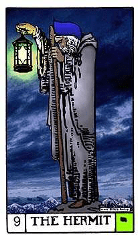
The Sephirot #9 Yesod has connotations with “binding” and “connecting” and connects the physical world to the world of Yetzirah or the world of the formation which is associated with the angels or mediators, the daemons, and the human soul is considered one of these. It is through the mediation of the angels that the physical world is elevated or lifted up and restored to its Creator. The physical world is “brought to a stand” i.e., elevated, through the use of language and number. This is the covenant of speech. That Yesod is also associated with the sexual organs indicates its relation to the covenant of the flesh, circumcision.

(This is how the Magician #1 card of the Tarot is to be understood: he is not Keter or #1, but rather Malkhut #10. Through the formation of the ready-to-hand physical things of the world (the cups, wands, pentacles, swords), he elevates these things to the level of Yetzirah or “formation” through the mediation of Yesod which is the foundation, or base, of the physical world, what we understand as “metaphysics”. Yesod requires and is associated with sense perception and will (the sexual organ, the “lower” associations with Eros), and these are the initial “mediators” between the soul and the physical world.)
Space, within which the Tree of Life rests, is not a two-dimensional circle but a sphere. The sphere is divided into a five-dimensional continuum. Space is prior to Time, and Time as well as number begins with the being of created things, the physis of the world, its materiality. The infinite One (the Good) is beyond both space and time. The boundaries of space, the limits, are the realm of Necessity. They are indicated by the 10 directions within which space is given.

Three dimensions are “up/down”, “north/south”, “east/west”, and these three dimensions are further defined by the six directions of World as outlined. The Time continuum is defined by two directions, past and future, or beginning and end. This is called “year” and is the fourth dimension. The fifth dimension is the spiritual dimension and is defined by good and evil, and this is called “soul”.
To illustrate these dimensions within the sphere of space using the Tree of Life: 1. Beginning (Chakmah/Wisdom)/ End (Binah/ Understanding); 2. Good (Keter/Crown)/ Evil (Malkhut/Kingship); 3. Up (Netzach/Victory)/ Down (Hod/Splendour); 4. North (Gevurah/Strength)/ South (Chesed/Love); 5. East (Tiferet/Beauty)/ West (Yesod/Foundation).
God, called Elohim, creates the world with 10 sayings or speeches, which is the understanding. (Elohim is the Christ, the Logos, of St. John, but he is not limited to this manifestation only. He could also be considered to be Krishna or any other of the possible names that human beings have come to understand Him in their being-in-the-world). Wisdom as beginning represents the past. Memory is hidden, concealed until it is revealed or re-collected through the understanding (in words or images). The mediation of Wisdom (past) and Understanding (future) conceived as Time is the present. (“The future comes to meet us from behind” as the Greeks would say.) It is in and through Time that things come to be. Wisdom is the no-thing of Being which becomes the some-thing through understanding, through speech and number.

The centre line of the Tree of Life from Keter to Malkhut is called the “Tree of Knowledge”. On a two-dimensional plane, Keter is seen as closest to God while Malkhut is farthest. This is the traditional way of viewing the creation. The centre line is composed of 4 Sephirot: Keter (Good), Tiferet (Beauty), Yesod (Foundation), and Malkhut (Kingdom). (In The Lovers #6 tarot card, Adam stands before the Tree of Life while Eve stands before the Tree of Knowledge, if one wishes to interpret the figures in this way). In the direction of the descent, the Good proceeds to Beauty which provides the Foundation for Kingdom. When the direction is as ascent, Kingdom is the deprivation of the understanding to seeing the Foundation as the manifestation of the Beautiful and the Good.
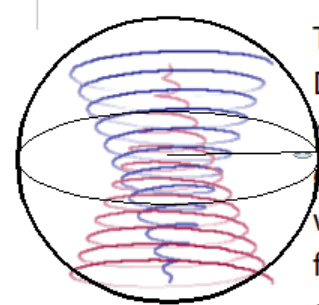
Since World is a sphere (an infinite sphere? A sempiternal sphere?), the speaking of up and down as far as directions does not make sense. The Sefer Yetzirah speaks of depths. There is a great depth, a chasm, separating the Necessary from the Good. The depths are the “deprivations” of things. The depths are the “need” of things to realize their true substance and to come to their true essence which is their perfection. This possibility of perfection is always present within them. The human being is the ‘perfect imperfection’. Something is absent, missing. For something to meet these needs, a great depth must be crossed. The crossing is done in a series of steps or leaps. (What was understood as Jacob’s Ladder) For God to answer prayers, a great depth must be crossed, the whole of the created World itself, for God Himself is unaffected by His creation. He is beyond both Space and Time. Given what we know about the deep immensities of space, this crossing is not easily accomplished.
